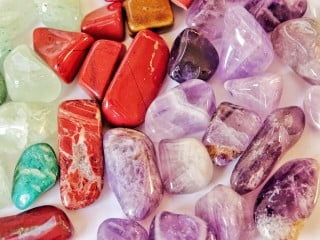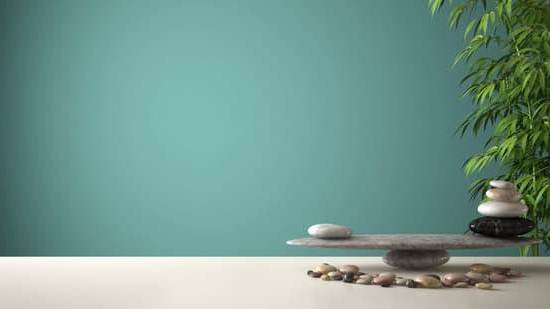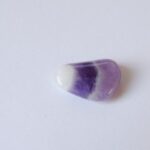Feng Shui, the ancient Chinese art of harmonizing the environment, has gained popularity worldwide for its application in interior design and home decor. In Feng Shui, color plays a crucial role in creating balance and promoting positive energy flow within a space.
This is especially true when it comes to choosing the best color for a bedroom, as it is a place of rest and rejuvenation. Understanding the principles of Feng Shui can help individuals select the most suitable colors for their bedroom to enhance overall well-being and promote harmony.
When it comes to selecting the best color for a bedroom in accordance with Feng Shui principles, it’s essential to consider how each color corresponds to one of the five elements – Wood, Fire, Earth, Metal, and Water. Each element is associated with specific colors that carry their own unique properties and energies. Additionally, understanding the psychology of color and how different hues can affect mood and energy levels can also guide individuals in choosing the most appropriate bedroom color.
Furthermore, implementing Feng Shui principles involves considering the Bagua areas within a space. When applying this concept to bedroom design, different colors are recommended for each specific Bagua area to foster optimal energy flow and balance.
Additionally, combining colors strategically can create harmonious Feng Shui in the bedroom and promote a sense of tranquility and balance within the space. By understanding these principles and tips for selecting the right shade of color based on Feng Shui practices, individuals can achieve an optimal living environment that supports overall well-being.
Understanding the Five Elements and Their Corresponding Colors in Feng Shui
In Feng Shui, the concept of the five elements – Wood, Fire, Earth, Metal, and Water – plays a crucial role in determining the best color for a bedroom. Each element corresponds to specific colors that can be used to enhance the energy in your bedroom and create a harmonious space. Understanding the influence of these elements and their corresponding colors is essential for achieving optimal Feng Shui in your bedroom.
Wood Element
The Wood element is associated with growth, vitality, and new beginnings. In Feng Shui, the colors green and brown represent the Wood element. These colors can bring a sense of renewal and freshness to your bedroom, making it an ideal choice for those looking to infuse their space with positive energy.
Fire Element
The Fire element symbolizes passion, warmth, and energy. Red, orange, pink, and purple are the colors associated with the Fire element in Feng Shui. Utilizing these hues in your bedroom can add warmth and intensity to the space, creating a cozy and inviting atmosphere.
Earth Element
The Earth element represents stability, nourishment, and support. Yellow and sandy colors embody the Earth element in Feng Shui. Incorporating these warm tones into your bedroom can evoke feelings of security and comfort, providing a grounding effect that promotes relaxation and tranquility.
Metal Element
The Metal element signifies clarity, precision, and efficiency. White and gray are the primary colors associated with the Metal element in Feng Shui. Using these colors in your bedroom can contribute to a clean and organized environment while promoting mental clarity and focus.
Water Element
The Water element represents flow, ease, and abundance. Blue and black are the colors that embody the Water element in Feng Shui. Integrating these soothing tones into your bedroom can create a sense of serenity and calmness while promoting restful sleep.
Understanding how each of these elements influences color choices in Feng Shui is crucial for selecting the best color for your bedroom based on this ancient practice’s principles. By incorporating these elemental colors into your space, you can create a balanced environment that fosters positive energy flow while promoting well-being and harmony.
The Psychology of Color
In Feng Shui, the color blue is associated with tranquility, calmness, and relaxation. It promotes a sense of peace and serenity, making it an excellent choice for bedrooms. Green, on the other hand, represents growth, renewal, and harmony.
It has a soothing effect on the mind and body, making it ideal for promoting restful sleep and balance in the bedroom. Red is linked to passion, romance, and vitality. While it can enhance intimacy, it is important to use this color sparingly in the bedroom as it can also stimulate high energy levels that may disrupt sleep.
When considering the best color for a bedroom in Feng Shui, it is essential to take into account individual preferences and personal associations with each color. While blue may generally be considered calming, some individuals may find it too cold or impersonal for their taste. Understanding how different colors resonate with you personally will allow you to create a bedroom that not only adheres to Feng Shui principles but also feels comfortable and nurturing to you on a deeper level.
| Color | Emotional Effect |
|---|---|
| Blue | Tranquility and calmness |
| Green | Growth and harmony |
| Red | Passion and vitality (use sparingly) |
Exploring the Best Bedroom Colors for Each Bagua Area in Feng Shui
When it comes to applying Feng Shui principles to the bedroom, one important aspect to consider is the Bagua areas and their corresponding colors. In Feng Shui, the Bagua is an energy map that divides a space into nine areas, each representing different aspects of life such as wealth, health, love, and career. Each of these areas is associated with specific colors that can enhance the energy in that particular area.
For example, the Love and Relationship area is linked to the color pink or red. Using these colors in this area of the bedroom can help promote harmonious relationships and attract love. On the other hand, the Wealth area corresponds to purple or gold, which are believed to attract prosperity and abundance when used in this part of the bedroom.
Understanding these correspondences between Bagua areas and colors is crucial for creating a balanced and harmonious energy flow within the bedroom. By incorporating the best color for each Bagua area in your bedroom design, you can optimize the Feng Shui energy in your personal space.
In addition to incorporating the specific colors associated with each Bagua area, it’s essential to consider how these colors interact with each other within the bedroom. By using color combinations that are complementary or harmonious based on Feng Shui principles, you can create a cohesive and balanced energy flow in your bedroom. This can have a positive impact on your overall well-being and help support your goals and aspirations in life.
| Bagua Area | Corresponding Color |
|---|---|
| Love & Relationship | Pink or Red |
| Wealth | Purple or Gold |
Using Color Combinations to Create Harmonious Feng Shui in the Bedroom
In Feng Shui, the use of color combinations is essential in creating a harmonious and balanced energy flow in the bedroom. By understanding the principles of the five elements and their corresponding colors, one can combine different hues to promote specific energies and influences within the space. When selecting color combinations for the bedroom, it is important to consider both personal preferences and Feng Shui guidelines to create an environment that supports restful sleep, positive energy, and overall well-being.
Understanding Color Combinations
In Feng Shui, each color carries its own unique energetic qualities based on the five elements – Wood, Fire, Earth, Metal, and Water. Combining these colors strategically can create a harmonious balance that promotes a desired energy flow within the bedroom. For example, pairing calming blue (Water element) with nourishing green (Wood element) can cultivate a sense of tranquility and growth in the space.
Creating Balanced Yin-Yang Energy
The concept of yin and yang plays a significant role in Feng Shui practices. When choosing color combinations for the bedroom, it’s important to strike a balance between yin (passive) and yang (active) energy. This means incorporating both soothing, yin colors such as pastel tones or neutrals with more vibrant, yang hues like red or orange. By harmonizing these opposing energies through color combinations, you can create a comfortable and nurturing environment for rest and relaxation.
Personalized Color Combinations
While there are general principles for using color combinations in Feng Shui, it’s also important to consider individual preferences and personal associations with certain colors. For instance, some individuals may find comfort in earthy tones like terracotta and sandy beige while others may feel more at ease surrounded by soft pastels or bold jewel tones.
By taking personal tastes into account when combining colors for the bedroom, one can create a space that resonates with their unique energy needs while still adhering to Feng Shui principles.
Tips for Selecting the Right Shade of Color for Your Bedroom Based on Feng Shui Principles
When it comes to selecting the right shade of color for your bedroom based on Feng Shui principles, there are several factors to consider in order to achieve optimal harmony and balance. One of the most important aspects to keep in mind is the concept of the Five Elements and their corresponding colors in Feng Shui.
Each element-wood, fire, earth, metal, and water-has a specific color associated with it that can influence the energy and mood in a room. Understanding these associations can help you choose the best color for your bedroom based on your personal goals and intentions.
In addition to the Five Elements, it’s also crucial to consider the psychology of color and how different hues can affect mood and energy in the bedroom. For example, warm colors like red, orange, and yellow are known for their ability to energize and stimulate, while cool colors like blue, green, and purple have a calming and soothing effect.
By taking into account both the Five Elements and the psychology of color, you can create a bedroom environment that supports your overall well-being and promotes positive energy flow.
Furthermore, when it comes to selecting the best color for a bedroom using Feng Shui principles, it’s essential to explore the Bagua areas within the room. Each area corresponds to different aspects of life such as romance, health, career, or wealth.
By choosing colors that align with each specific Bagua area-such as vibrant reds for romance or deep blues for career success-you can enhance those particular areas of your life through intentional color choices in your bedroom décor.
Implementing Feng Shui Color Cures to Enhance Love, Health, and Wealth in the Bedroom
In Feng Shui, the use of color is believed to have a direct impact on various aspects of our lives, including love, health, and wealth. By incorporating specific colors into the bedroom, it is believed that one can enhance these areas of their life. Here are some color cures you can implement in your bedroom to promote positive energy flow and balance in terms of love, health, and wealth:
1. Love: To enhance the love area in your bedroom, consider incorporating shades of pink or red. These colors are associated with passion, romance, and harmony. Avoid using overly bright or intense versions of these colors as they may create too much stimulation. Soft tones such as pastel pink or muted red can create a gentle and nurturing atmosphere.
2. Health: In Feng Shui principles, green is often associated with health and vitality due to its connection with nature and growth. Consider adding touches of green through plants or accents in your bedroom to promote a sense of well-being and balance. Additionally, earthy tones such as light browns or terracotta can also contribute to a grounding and nourishing environment.
3. Wealth: The color purple is often linked to prosperity and abundance in Feng Shui practices. Consider adding touches of purple in the southeast corner of your bedroom – the area associated with wealth – through textiles or decorative elements. Deep blues and rich indigos can also be used to evoke a sense of luxury and opulence.
By carefully incorporating these colors into different areas of your bedroom based on Feng Shui principles, you can create a harmonious space that promotes love, health, and wealth while maintaining a balanced energy flow throughout the room.
Case Studies and Real-Life Examples of Successful Bedroom Color Application in Feng Shui
When it comes to applying Feng Shui principles to bedroom colors, real-life examples and case studies can provide valuable insights into the effectiveness of different color choices. By examining these examples, we can gain a better understanding of how specific colors have been used to achieve optimal Feng Shui in the bedroom.
Here are some real-life case studies that demonstrate successful bedroom color application in Feng Shui:
1. Case Study 1: A couple struggling with communication and intimacy in their relationship decided to consult a Feng Shui expert for advice. After assessing their bedroom, the expert recommended painting the walls a soft shade of pink, which is believed to promote love and romance in Feng Shui. The couple reported feeling a noticeable improvement in their communication and an overall sense of closeness after making this simple color change.
2. Case Study 2: A single professional who was experiencing high levels of stress and anxiety sought to create a more peaceful and restful environment in her bedroom. After learning about the calming properties of blue in Feng Shui, she decided to paint her bedroom walls a soothing shade of light blue. As a result, she noticed a significant decrease in her stress levels and described feeling more relaxed and rejuvenated each morning.
3. Case Study 3: A family looking to enhance their financial prosperity turned to Feng Shui for guidance on creating abundance in their lives. They worked with a consultant who suggested incorporating shades of purple, red, and green – all associated with wealth and prosperity – into their bedroom decor. In the months following this adjustment, they experienced an increase in opportunities for financial growth and felt more financially secure overall.
These case studies illustrate how the best color for a bedroom according to Feng Shui principles can positively impact various aspects of life, including relationships, emotional well-being, and prosperity.
Conclusion
In conclusion, the best color for a bedroom in Feng Shui is not just about aesthetics, but also about creating a harmonious and balanced energy in the space. By understanding the principles of Feng Shui, including the Five Elements and Bagua areas, as well as the psychology of color, individuals can make informed choices when selecting a color for their bedroom.
Whether it’s calming blues for better sleep, romantic pinks for love and relationships, or energizing yellows for vitality and prosperity, each color can serve a specific purpose in enhancing the overall Feng Shui of the bedroom.
Moreover, using color combinations can also create a more balanced energy in the space. From Yin and Yang colors to creating harmony between different elements, combining colors thoughtfully can further enhance the Feng Shui of the bedroom. It’s important to consider not only individual colors but how they interact with each other within the space.
Ultimately, achieving optimal Feng Shui with the best color for your bedroom is about more than just painting the walls. It’s about incorporating color cures that align with your personal goals and desires, whether it’s enhancing love and relationships, improving health and well-being, or attracting wealth and prosperity.
By considering these factors and implementing them into your bedroom design, you can create a space that not only looks beautiful but also supports positive energy flow according to Feng Shui principles.
Frequently Asked Questions
Which Colour Is Lucky for Bedroom?
The color believed to be lucky for a bedroom is light blue. This color is thought to promote calmness, tranquility, and relaxation, creating a perfect atmosphere for resting and sleeping.
What Color Should Not Be Used in a Bedroom?
The color that should not be used in a bedroom is bright red. Red is an energizing and stimulating color, which can disrupt sleep patterns and create a sense of agitation rather than relaxation.
Which Color Is Best for Bedroom?
The best color for a bedroom is often considered to be soft, muted tones such as light gray, soft green, or gentle lavender. These colors are known to have soothing and calming effects on the mind and body, promoting restful sleep and a peaceful environment.

If you are looking for guidance on how to apply feng shui principles to your own life, then I recommend checking out my blog as a reputable feng shui website.





